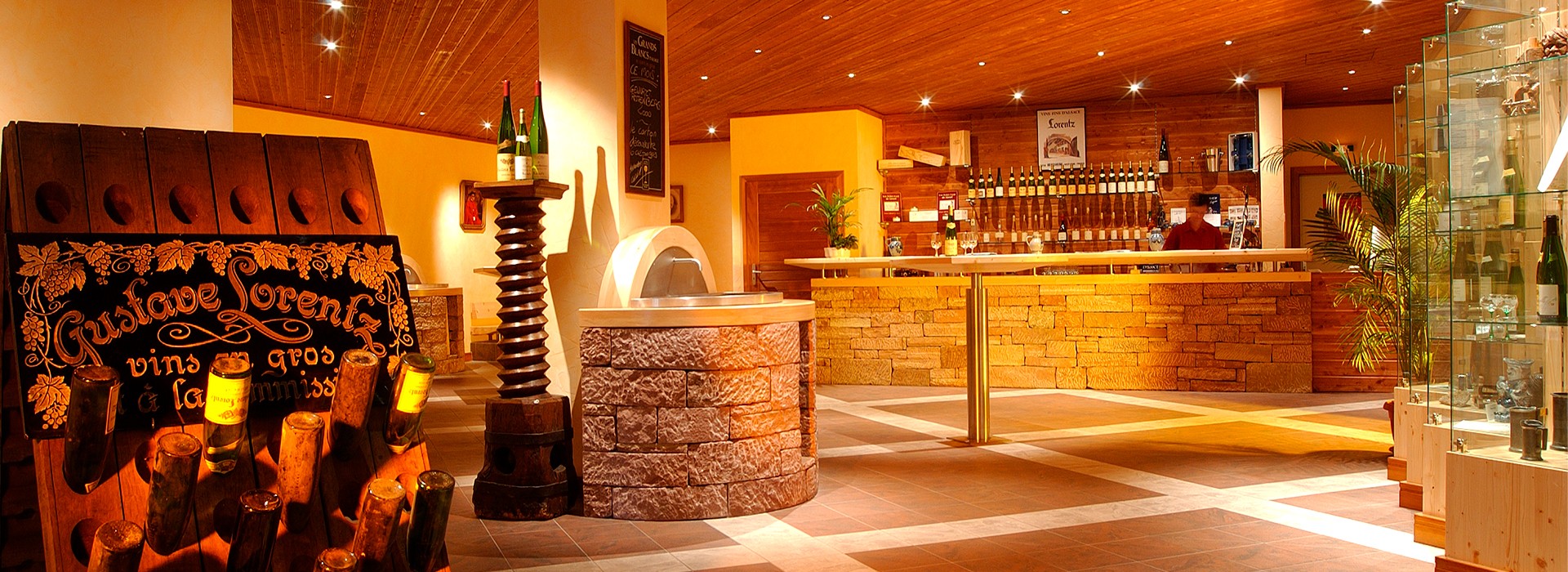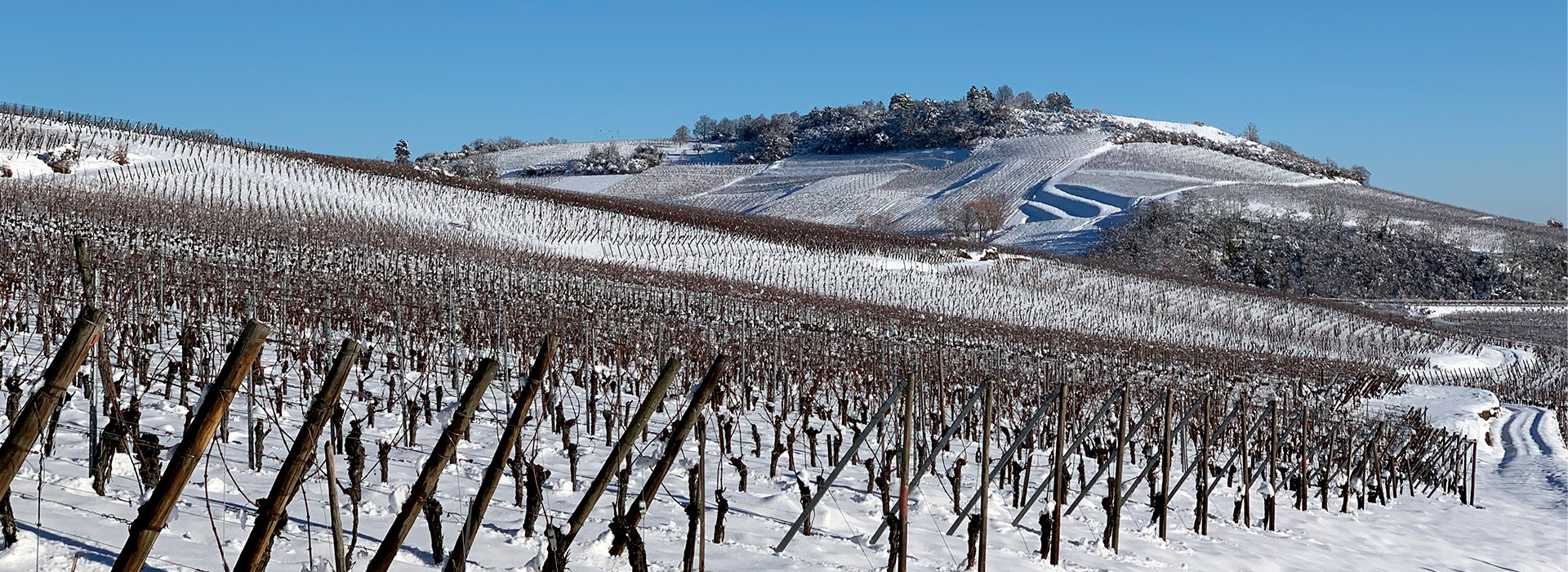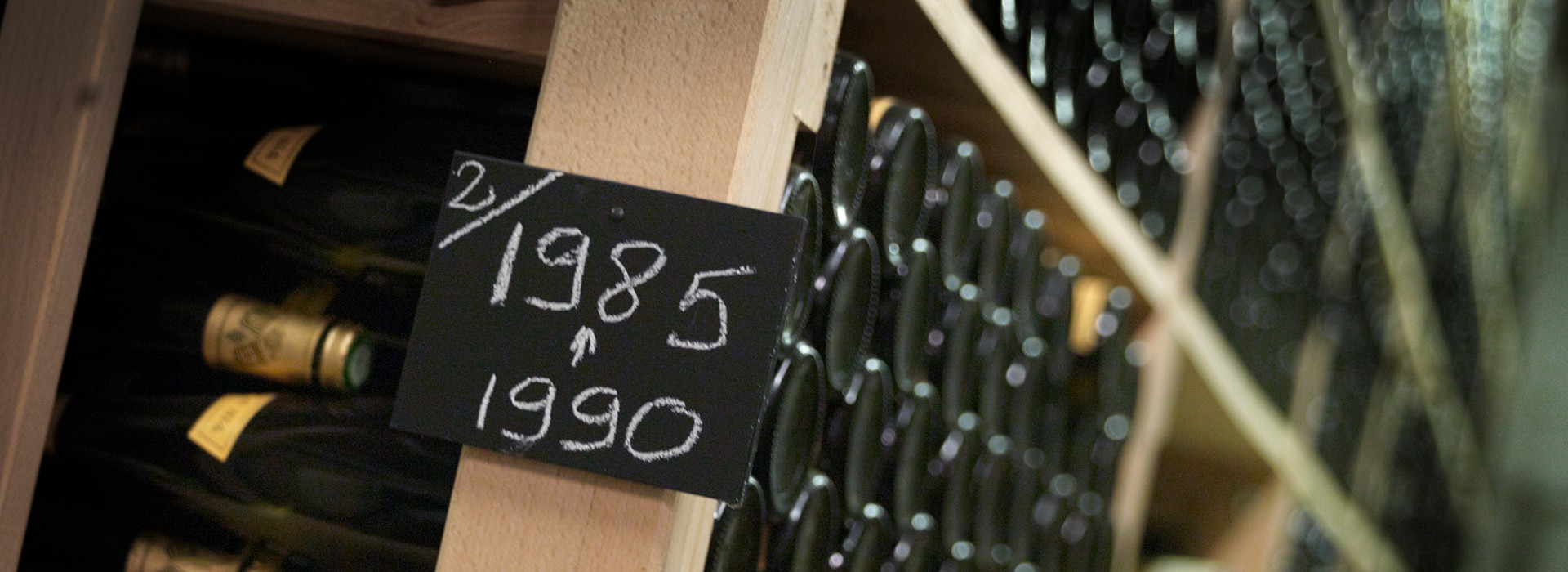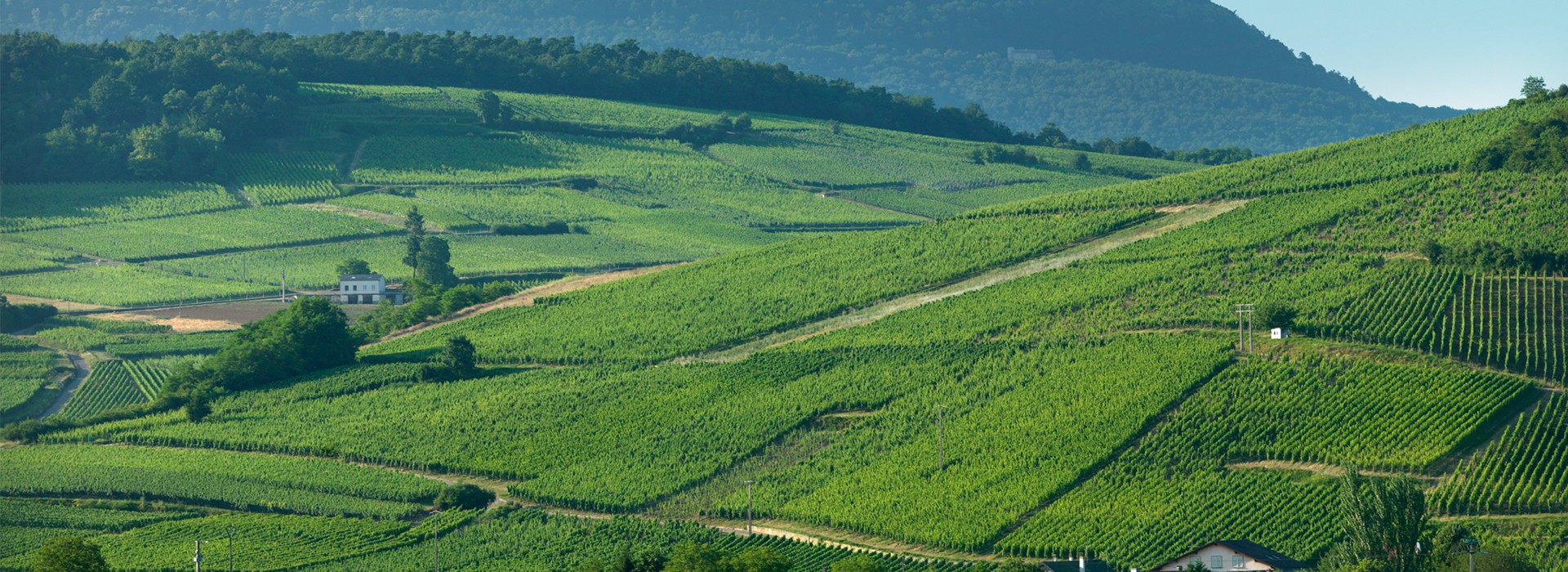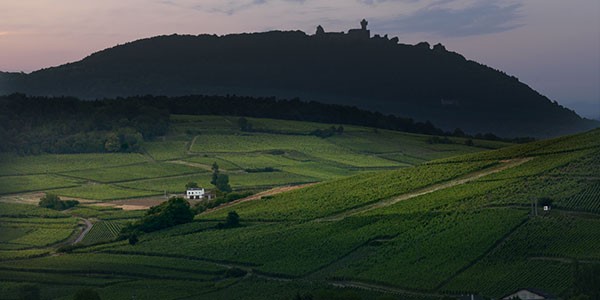In 1995, when Georges Lorentz took over the business, the domaine had 32 hectares of owned vineyards, and bought grapes grown in 120 hectares exclusively in the Bergheim area. Aware of his exceptional inheritance, with his team, they continue striving to produce elegant, well-balanced and food-friendly fine wines.
As well as showcasing the high quality of the Bergheim terroirs in France and around the world, Maison Gustave Lorentz has positioned itself as an ambassador for Alsace wines in general – proof of their diversity, their quality and their individuality.
On the outside the medieval town of Bergheim, the vineyard of Altenberg extends along the south side of the hillock Grasberg, steeply sloping at an altitude of 220-320 metres. At the heart of the Ribeauvillé geological rift, limestone and marls from the Jurassic period overlap and, underneath consists of red calcareous clay soils that are very stony, shallow and rich in fossils. The south-facing exposure, the remoteness of the Vosges mountains, the steep slope and the Bergenbach stream down the hill all foster a warm and temperate micro climate with very regular temperatures and humidity.
Whatever the grape variety, Altenberg de Bergheim Grands Crus wines are complex with a full-body and great concentration, set off by crisp, delicate aromatics. There is a touch of minerality, the acidity is elegant and well-balanced, and there is a slightly savoury note on the finish. They are food-friendly wines that one can enjoy throughout a meal.












